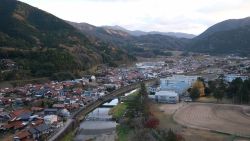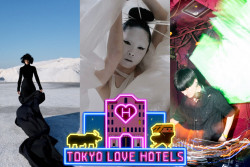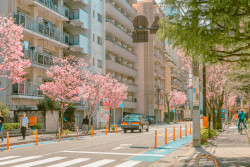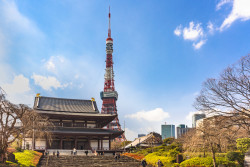
What image springs to mind when you hear the name Salvador Dalí? Is it his most famous painting, The Persistence of Memory, with its melting clocks hanging off branches? Or his trademark facial expression—eyebrows raised, lips pursed, and thin moustache upturned?
Best known for his Surrealist paintings, it is perhaps surprising to find that Dalí also explored several other artistic styles and forms over the course of his long and prolific career. The Dalí exhibit, running at the National Art Center in Tokyo until December 12th, aims to explore his full range.
Naturally, it starts with some of his earliest works dating back to when he was only fourteen. These are mainly small still lifes and landscapes from his summer holidays in the Catalan resort of Cadaqués. They are painted in a modern style, often referencing elements of Impressionism, and reveal his remarkably early understanding of perspective, depth, and movement.
From there we move into his student years at the Real Academia de Bellas Artes de San Fernando in Madrid and his absorption with Futurism, Fauvism, Purism, Classism and especially Cubism. Even those with only a passing knowledge of art should be able to see the influence of Pablo Picasso’s ideas on the young Dalí.
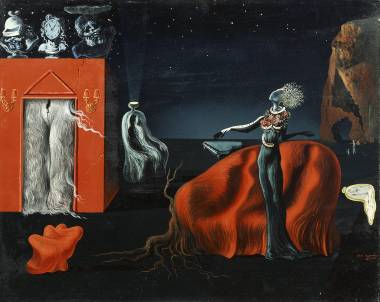
Collection of the Fundació Gala-Salvador Dalí, Figueres
© Salvador Dalí, Fundació Gala-Salvador Dalí, JASPAR, Japan, 2016.
There is so little here that resembles his later work it is hard to imagine this artist is the same person, but small elements of similarity can be found, especially in the Portrait of Luis Buñuel with its depiction of objects in the far distance set against an expansive landscape. This style reoccurs in his later Surrealist works. Incidentally, this painting is also meaningful for depicting his good friend and occasional collaborator, most famously on the film “Un Chien Andalou,” screening in the next room.
As we move into his Surrealist period, noticeably missing from the exhibit is Dalí’s most famous work, the aforementioned The Persistence of Memory. Indeed, we see remarkably few depictions of melting clocks or elephants on stilts, the two reoccurring themes Dalí is perhaps most known for. But that is to the exhibit’s merit, as we are not distracted from noticing other elements common in Dalí’s works—open drawers, imprints of the human form, ants, angels, eggs, shells, the Venus de Milo and bread, among others. Dalí never fully explained these elements, but as he was good friends with Sigmund Freud, it is likely he felt the images sprang from his subconscious and could only be interpreted by psychoanalysis. This also leaves us free to speculate on their meanings for ourselves.
Most of the rest of the museum is devoted to the influence of his muse and wife, Gala; their exile in America during World War 2; and Dalí’s subsequent work in a staggering range of media. He designed ballet costumes, stage sets, film sets, and jewelry, as well as working in book illustration and on commissioned portraits or murals for wealthy clients. Quite fittingly, one of his projects on display is a series of illustrations for a new edition of Alice in Wonderland. His work during this time continued to be Surrealist.
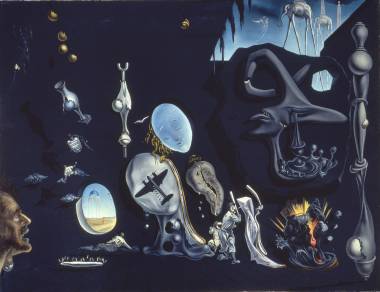
Collection of the Museo Nacional Centro de Arte Reina Sofía, Madrid
© Salvador Dalí, Fundació Gala-Salvador Dalí, JASPAR, Japan, 2016.
The second to last room of the exhibit shows Dalí moving in a different direction as the world entered into the atomic age. Three paintings in particular show this evolution. The first is Uranium and Atomica Melancholica,which is still surreal yet with a noticeably darker tone than his earlier works, reflecting his fear upon hearing of the nuclear bombings of Hiroshima and Nagasaki.
Next is the colossal masterpiece, The Madonna of Port Lligat, which is actually his second painting by that same name. Here you see him re-incorporating elements of Classicism, Renaissance art and Catholic imagery into his work–a faith he was becoming increasingly involved in–as well as attempting to express the new ideas of particle theory with objects floating yet separated in space.
The third piece is a mid-size painting, the Maximum Speed of Raphael’s Madonna, which reflects his efforts to express new scientific knowledge through art. It is a complex image of whirling shapes, separate yet caught together in a spiral that evokes the helical DNA structure from genomic theory and the separation of atoms from particle theory.
The last room feels, fittingly, like the epilogue that it is. Dalí became increasingly interested in returning to classical themes, often painting large works that referenced old masters such as Velázquez and Michelangelo, or reworking classical themes into a softer version of Surrealism, such as in Study for The Hallucinogenic Toreador.
There is one final encore as you exit the museum proper. The Mae West Room from the Dalí Museum in Figueres, Spain has been recreated as a backdrop for taking selfies. Mirrors have been set up so you can photograph yourself within the artwork itself. It’s an interesting idea, one which I suspect Dalí himself would approve of!
Through Dec 12. National Art Center Tokyo. 7-22-2 Roppongi, Minato-ku. 10am-5:30pm. Closed Tues & hol. Nearest station: Nogizaka.
